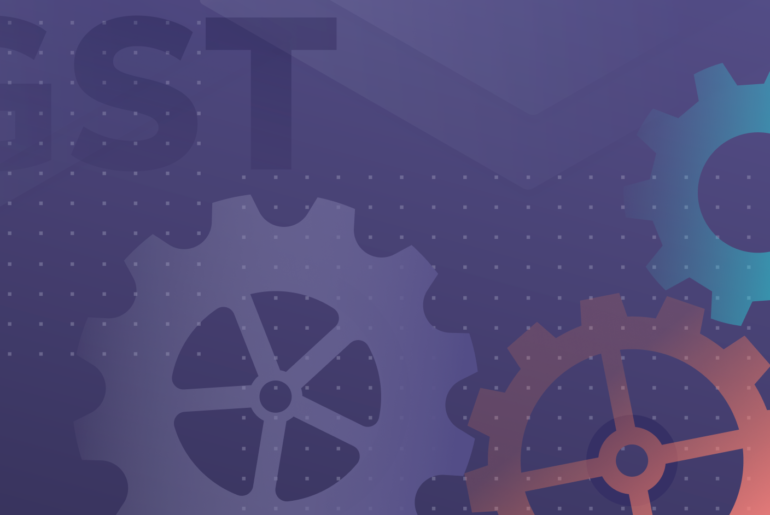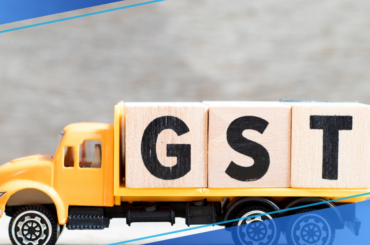Table of Contents
Latest Update About Reverse Charge Mechanism
- June 22, 2024: The GST Council recommends that for unregistered supplier RCM transactions, the financial year for input tax credit limits should be when the recipient issues the invoice.
- July 23, 2024: Proposed amendment to CGST Act Section 13 regarding time of supply for RCM services from unregistered suppliers. The implementation of this change is pending notification from the Central Board of Indirect Taxes and Customs (CBIC).
- June 26, 2024: CBIC Circular No. 211/5/2024-GST clarifies input tax credit availability for recipient-issued invoices under RCM.
Related Read: Check the Updated GST Rates for Common Goods and Services
What is Reverse Charge Mechanism (RCM) in GST?
Reverse charge mechanism (RCM) under GST refers to the situation where the liability to pay tax for the supply of goods or services shifts from the supplier to the recipient, particularly in specific cases involving purchases from unregistered dealers.
This mechanism aims to broaden tax collection, especially in unorganised sectors, and covers certain services imports.
Reverse Charge Mechanism Example
Here are some reverse charge mechanism examples:
Example 1
XYZ Pvt Ltd, a registered company, purchases raw cashews worth ₹50,000 from an unregistered farmer. Since the farmer doesn’t charge GST, XYZ Pvt Ltd is responsible for paying GST under RCM. The company calculates 5% GST, amounting to ₹2,500, and pays it directly to the government. It later includes this amount in its GST liability when filing tax returns.
Example 2
An SME registered under GST hires an unregistered freelancer for website design services worth ₹20,000. Since the freelancer doesn’t charge GST, the SME is responsible for paying it under RCM. The SME calculates 18% GST, amounting to ₹3,600, and pays it directly to the government. It later includes this amount in its GST liability when filing tax returns.
Different Types of Reverse Charges Under GST
1. Forward Charge
In a forward charge scenario, the supplier collects the tax from the customer and then pays it to the tax authorities.
For example, if a car manufacturing company sells auto parts worth ₹1,00,000 to a trader, it collects GST from the trader and later pays it to the government. This is the standard process for most transactions under GST.
2. Backward Charge
The reverse charge or backward charge method is less common but is used in specific situations to ensure tax compliance and increase tax revenues. Under the GST reverse charge, the recipient of the service becomes responsible for paying the tax directly to the government.
For example, if a chartered accountant provides professional services worth ₹50,000 to a client, it is the client who is liable to pay GST under this mechanism.
Several services fall under reverse charge on GST:
- Goods transport agency (GTA) services
- Legal services
- Rent-a-car services
- Manpower supply services
- Import of taxable services
- Security services
- Service portion in execution of works contract
- Sponsorship services
Difference Between Forward Charge Mechanism (FCM) and Reverse Charge Mechanism (RCM)
In short, the Forward Charge Mechanism requires the supplier to pay the tax, while the Reverse Charge Mechanism requires the recipient to pay the tax.
In detail, under the Forward Charge Mechanism (FCM), the GST registered supplier is responsible for collecting the tax from the recipient and remitting it to the government after adjusting for input tax credits. In contrast, under the Reverse Charge Mechanism (RCM), when a registered recipient purchases goods or services from unregistered suppliers, the recipient is responsible for paying the tax directly to the government.
Related Read: How to Register for GST Online?
RCM Applicability Under GST
RCM under GST applies to specific goods and services, supplies from unregistered to registered dealers, and services provided through e-commerce operators.
Reverse Charge on Goods under Section 9 (3)
Description of Goods |
Supplier of Goods |
| Cashew nuts | Agriculturist |
| Tobacco leaves | Agriculturist |
| Bidi wrapper leaves | Agriculturist |
| Silk yarn | Individuals who process raw silk to produce silk thread |
| Used vehicles, seized goods, old items, waste, and scrap. | State, Central, or Union Territory Governments, or local authorities. |
| Raw cotton | Agriculturist |
| Supply of lottery | State Government, Union Territory, or any local authority |
Reverse Charge on Services under Section 9 (3)
Category of Services |
Supplier of Services |
Recipient of Services |
| GTA Services | Goods Transport Agency (GTA) | Any factory, cooperative society, registered person, body corporate, partnership firm, or casual taxable person; located in the taxable territory |
| Legal services | Individual advocates or firms of advocates | Business entities within the taxable territory |
| Sponsorship services | Any Person | Corporations or partnership firms within the taxable territory. |
| Arbitration tribunal services | An arbitral tribunal | Business entities within the taxable territory. |
| Services to a business entity | State, Central, or Union Territory Governments or local authorities | Business entities within the taxable territory. |
| Insurance-related services | An Insurance Agent | Insurance business entity. |
| Services supplied to a corporate body | Director of a company | A corporate body. |
| Recovery service | A recovery agent | Banking companies, financial institutions, or non-banking financial companies within the taxable territory |
| Music composition, photography service, or other artistic service | Author or music composer, photographer or artist | Publishers, music companies, or producers within the taxable territory |
Supply of Goods and Services from an unregistered dealer to a registered dealer
Section 9(4) of the CGST Act applies when a registered dealer purchases goods or services from an unregistered dealer. According to this section, the registered dealer is required to pay the applicable GST on behalf of the unregistered dealer.
Example: Suppose a registered business in Maharashtra (intra-state) purchases goods from a small, unregistered supplier. Under Section 9(4), the registered dealer must pay both SGST and CGST on this purchase.
Supply of services through an e-commerce operator
Section 9(5) of the CGST Act places the responsibility of collecting and depositing GST on e-commerce operators for certain specified services or goods sold through their platform. Instead of the seller collecting GST from the buyer, the e-commerce operator does so and remits it to the government.
Example: If a food delivery platform facilitates the sale of meals from a restaurant to a customer, the platform (e-commerce operator) is required to collect the applicable GST for food items from the customer and deposit it with the government.
RCM Rules in GSTR Forms – GSTR 1 and GSTR 2
The GSTR-1 and GSTR-2 forms play crucial roles in the reporting of transactions under the RCM in the Goods and Services Tax framework.
GSTR-1 is filed by suppliers to report outward supplies, including those subject to RCM, where the recipient is liable to pay tax. Suppliers must detail these RCM transactions in specific sections of GSTR-1, ensuring accurate reporting of sales that attract reverse charges.
Conversely, GSTR-2, which is currently suspended, was designed for recipients to report inward supplies, including purchases subject to RCM.
Although GSTR-2 is not in use, its functions have been largely absorbed into GSTR-3B, where recipients summarise their eligible Input Tax Credit claims and report any purchases under RCM.
When RCM applies, the supplier must report the sale in GSTR-1, while the recipient needs to summarise their purchases in GSTR-3B. The recipient discharges the tax liability through their electronic cash ledger and can claim ITC on these purchases in subsequent tax periods. However, the claim for ITC is only permissible after ensuring that the supplier has reported the corresponding sale. This dual reporting mechanism ensures transparency and accountability in transactions where tax liability shifts from supplier to recipient under RCM.
Time of Supply of Goods and Services under Reverse Charge Mechanism
The Time of Supply determines the point at which a transaction is considered to have occurred for GST purposes.
This, in turn, affects:
- The applicable tax rate
- When the GST liability must be paid
- The due date for filing GST returns
- The timing of Input Tax Credit (ITC) claims
Time of Supply for Goods under RCM
For goods that are subject to reverse charge, the time of supply is the earliest of:
- Date of receipt of goods.
- Date immediately following 30 days from the supplier’s invoice date.
- Date of entry in the recipient’s books of account (if a and b are not applicable).
Let’s consider a scenario where a business receives goods under RCM:
- Date of receipt of goods: September 15, 2023
- Supplier’s invoice date: August 1, 2023
- Date of entry in recipient’s books: October 25, 2023
In this case, even though the goods were received on September 15, the time of supply is determined to be September 1 (30 days from the invoice date), as it’s the earliest date among the options. The business would need to pay GST and file returns based on this date.
Time of Supply for Services under RCM
For services under reverse charge, the time of supply is the earliest of:
- Date of payment
- Date immediately following 60 days from the supplier’s invoice date
- Date of entry in the recipient’s books of account (if a and b are not applicable)
Consider a business receiving services under RCM:
- Date of payment: September 10, 2023
- Supplier’s invoice date: August 1, 2023
- Date of entry in recipient’s books: November 20, 2023
In this scenario, the payment date (September 10) comes before the date 60 days after the invoice (October 1). Therefore, September 10 is considered the time of supply. The business would need to pay GST and file returns based on this date.
What Are the Registration Requirements Under RCM?
The mandatory registration requirement under RCM aims to combat tax evasion, particularly from unregistered dealers, and increase overall tax compliance.
Below are a few key points about registration:
1. Threshold Limit
Under RCM, the typical GST registration threshold doesn’t apply. Any individual liable to pay GST under RCM must register, regardless of their turnover.
2. Supplier vs. Recipient
In RCM transactions, suppliers must indicate on invoices if tax is payable under RCM but cannot claim ITC on GST paid. Recipients, however, can claim ITC on RCM-paid GST for business-related goods or services.
3. Composition Dealers
Composition dealers are liable to pay tax at standard rates under RCM rather than their usual composition rates.
4. GST Compensation Cess
The GST compensation cess also applies to RCM transactions. This means that for applicable items, the cess must be calculated and paid along with the regular GST under RCM.
5. E-commerce Services
When certain services are provided through e-commerce operators, the e-commerce platform, not the individual service provider, becomes responsible for collecting and remitting GST to the government.
Who Needs to Pay GST Under RCM?
Under RCM, the recipient of goods or services is liable to pay GST instead of the supplier. This is an important aspect of GST law.
Here are a few checklists for recipients:
- Verify if RCM applies to the goods or services you’re receiving.
- Check the supplier’s invoice for RCM mention.
- Issue a self-invoice if required.
- Pay GST in cash (cannot use input tax credit for this payment).
How Does Input Tax Credit (ITC) Work Under RCM?
When GST is paid under RCM, the supplier cannot claim Input Tax Credit (ITC). However, the recipient has the right to claim ITC.
This is subject to two important conditions:
- The recipient must have received the goods or services.
- The recipient will use goods or services for business purposes only.
Circular No. 211/5/2024-GST clarifies the timeframe within which recipients can claim ITC for GST paid under RCM. As per this circular, the time limit for availing ITC would be the financial year in which the self-invoice was issued.
How Does the Reverse Charge Mechanism Affect Businesses?
Positive Impacts of RCM
1. Enhanced Compliance and Fair Competition
CM ensures that smaller companies can compete fairly with larger corporations, as everyone adheres to the same compliance standards. As a result, tax evasion is minimised, and businesses across sectors are held to similar tax obligations.
2. Cost Saving through Tax Credits
RCM allows you to claim input tax credits for taxes paid. This can help reduce your overall tax liability. This is beneficial for businesses that want to optimise their cash flow management.
Challenges of RCM
1. Increased Compliance Burden
RCM imposes additional administrative burdens. Businesses need to invest time and resources and require specialised tax expertise to understand the complexities of the mechanism.
2. Complex Documentation Requirements
Accurate documentation is important for businesses that claim ITC under RCM. However, maintaining detailed records can be a challenge. Mistakes, intentional or unintentional, can lead to non-compliance and result in penalties and interest charges.
What is Self Invoicing?
Self-invoicing is a process where buyers generate an invoice for themselves rather than receive one from the seller. The need for self-invoicing arises from the shift in tax liability under RCM. When a registered business buys from an unregistered supplier, the responsibility for paying GST moves to the buyer. By creating a self-invoice, the registered business fulfils this tax liability.
Self-invoicing should be done when goods or services from unregistered suppliers are received. However, for multiple small purchases, a consolidated monthly invoice can be issued if the aggregate value of supplies exceeds ₹5,000 in a day. It’s important to note that self-invoicing is not required for all purchases from unregistered suppliers, but it is mandatory for those falling under RCM.
How Can Razorpay Help with Self-Invoicing?
Razorpay offers a self-invoicing feature that can streamline the process of creating and managing invoices for businesses. This feature is particularly beneficial for businesses that need to issue invoices to customers who are not registered for GST (Goods and Services Tax).
Key Benefits of Razorpay’s Self-Invoicing Feature:
- Simplified Invoice Creation: The platform provides a user-friendly interface for creating invoices quickly and accurately.
- Automated Calculations: Razorpay automatically calculates the GST amount based on the product or service details entered, reducing the risk of errors.
- Easy Payment Collection: Invoices generated through Razorpay can be easily shared with customers, who can then make payments online using various methods.
- Payment Tracking: The platform allows you to track the status of payments and generate reports for reconciliation purposes.
- Integration with Other Tools: Razorpay can be integrated with other business tools like accounting software, making it easier to manage your finances.
Frequently Asked Questions
1. What is the purpose of the reverse charge?
The purpose of the RCM is to widen the scope of tax levy on various unorganised sectors, exempt specific classes of suppliers, and tax the import of services.
2. How is RCM calculated?
RCM is calculated based on the applicable GST rates using the formula: (Value of Goods/Services) x (Applicable GST Rate). You can also make use of the GST calculator online to get the GST rate of the product or services.
3. What are the exemptions under reverse charge mechanism?
RCM does not apply to exempt, nil-rated, or non-taxable supplies. A recipient buying such supplies is exempt from RCM.
4. Is RCM in GST refundable?
Yes. To claim a refund, the service recipient must be a registered GST taxpayer who has paid RCM tax. Additionally, they must not have claimed or utilised ITC on this RCM payment up to the refund application date.
5. What if RCM is not paid?
If RCM is not paid the recipient may lose eligibility for ITC.
6. What is the limit of RCM?
RCM is applicable under Section 9(4) of the CGST Act when the value of intra-state supplies of goods or services (or both) exceeds Rs. 5,000 per day.
7. How do I claim reverse charge on GSTR 3b?
Recipients must report their GST liability under RCM in Table 3.1 D of GSTR-3B. They can later claim an Input Tax Credit (ITC) for these transactions in Table 4A of GSTR-3B for the same month.
8. How does the RCM work for interstate supplies?
Incase of interstate supplies, the buyer has to pay the IGST under RCM. The government periodically updates the list of goods and services that fall under this provision.
9. Are there any specific rules for the RCM in the case of import of goods and services?
Yes, RCM is applicable to the import of goods and services. The recipient has to pay the applicable IGST under RCM.
10. How does the RCM affect the tax liability of the recipient and the supplier?
Under RCM, the tax liability shifts from the supplier to the recipient. The recipient has to pay the GST directly to the government. The supplier’s tax liability gets reduced by the value of supplies made under RCM.
11. Can the RCM be opted out of?
Yes, you can opt out of the RCM GST if you’re a Goods Transport Agency (GTA) by opting for the Forward Charge Mechanism (FCM). However, to switch back to RCM, you’ll need to file the required forms, and the change will only apply from the next financial year.
12. What are some best practices for businesses to comply with the RCM?
- Maintain proper records of RCM transactions.
- Issue self-invoices for RCM purchases from unregistered suppliers.
- Pay RCM taxes by the due date to avoid interest and penalties.
- Claim ITC on RCM payments if used for business purposes.
- Stay updated with the list of goods and services under RCM.





